Summary
Java ‘Single Shot’ Integrated Amplifier Review
$11,495
ANDREW BAKER gets seriously caffeinated listening to New Zealand’s superb Java Single Shot integrated amplifier.
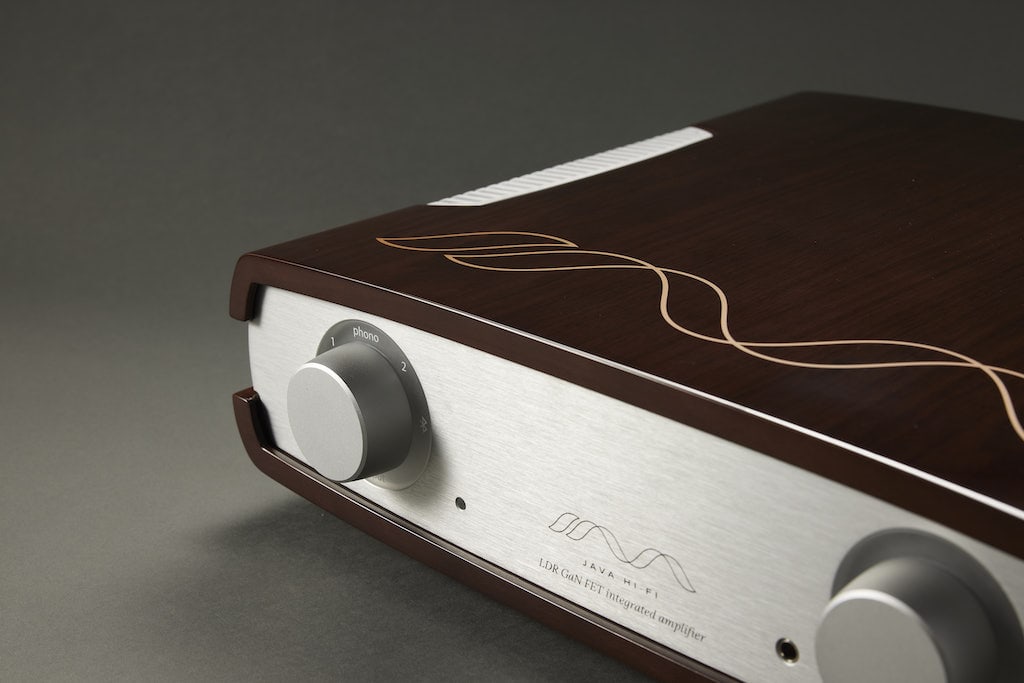
 Perusing hi-fi forums and comment sections can leave one with the impression that the audiophile world is full of trolls, scallywags and hooligans. But when you get to meet and chat with some of the folks involved in this hobby – whether they’re enthusiasts, retailers, fellow reviewers, or those who design and build the very products we lust and argue over – you will often get an entirely different impression altogether. I’ve been fortunate enough to meet and interact with lovely people like The Wand’s Simon Brown, Tex Tone’s Tex Houston, Theophany’s Garth Murray, some of the guys at Perreaux and Plinius – and now I get to add Java HiFi’s Martin Bell to my list.
Perusing hi-fi forums and comment sections can leave one with the impression that the audiophile world is full of trolls, scallywags and hooligans. But when you get to meet and chat with some of the folks involved in this hobby – whether they’re enthusiasts, retailers, fellow reviewers, or those who design and build the very products we lust and argue over – you will often get an entirely different impression altogether. I’ve been fortunate enough to meet and interact with lovely people like The Wand’s Simon Brown, Tex Tone’s Tex Houston, Theophany’s Garth Murray, some of the guys at Perreaux and Plinius – and now I get to add Java HiFi’s Martin Bell to my list.
I was invited to visit Java’s small but busy Northcote, Auckland factory for a tour which included a demo of the Single Shot integrated, as well as the opportunity to take one home to conduct a review. I first heard of Java a few years back when they crowdfunded to produce their LDR passive pre-amp which, by all accounts, was very nice but regrettably escaped my inspection.
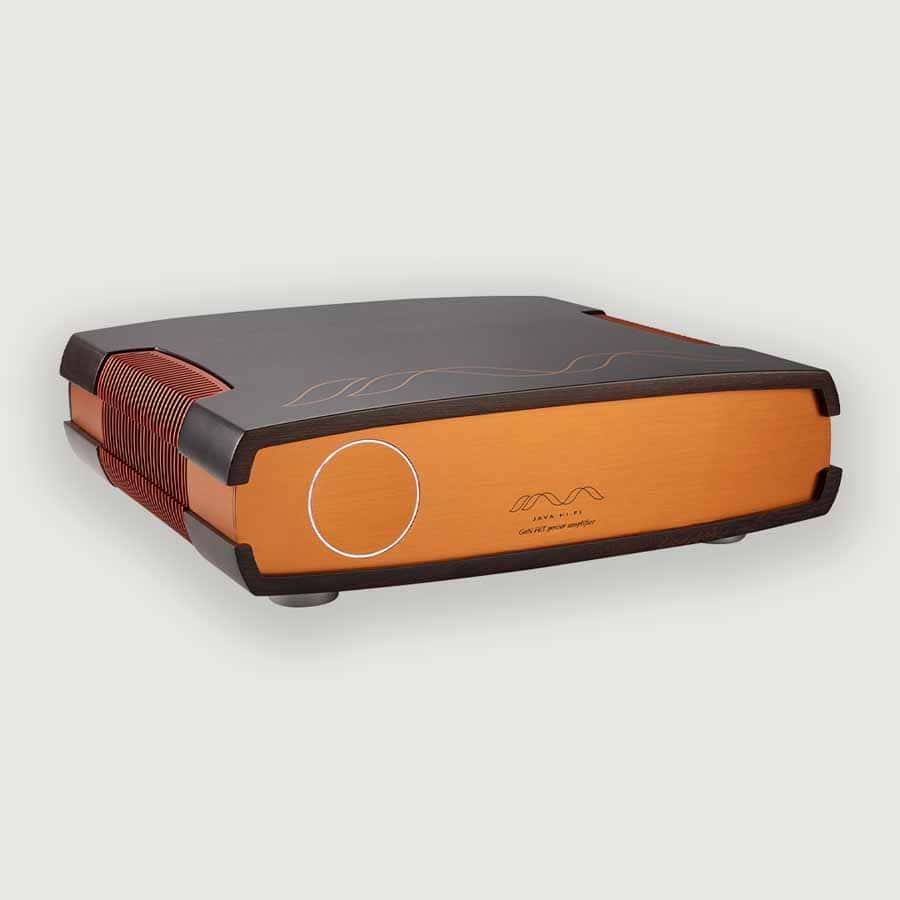
Given the brand name, it may come as little surprise that Martin Bell is a coffee enthusiast and sure enough, a delicious freshly made caffeinated beverage which was included in my tour of the modern-looking Java facilities.
It was a lovely sight, seeing shelves stacked with Java amps in varying stages of production, many finished and waiting to be shipped out to fulfil orders. In the listening area are a pair of handsome white Wolf von Langa 12” field coil speakers (priced around $37k) being driven by, naturally, Java amplifiers. An Antipodes Audio streamer provides digital music while records are spun on a (I believe) Soulines Kubrick DCX turntable fitted with a Wand Tonearm.
Martin played me a selection of tracks through the Antipodes, and I was instantly taken by the open and effortless sound in front of me. Everything he played sounded rich, natural, lifelike and present. Despite my unfamiliarity with this setup and room, I was impressed. It goes totally without saying that I could not wait to get home with one of these Single Shot amplifiers.
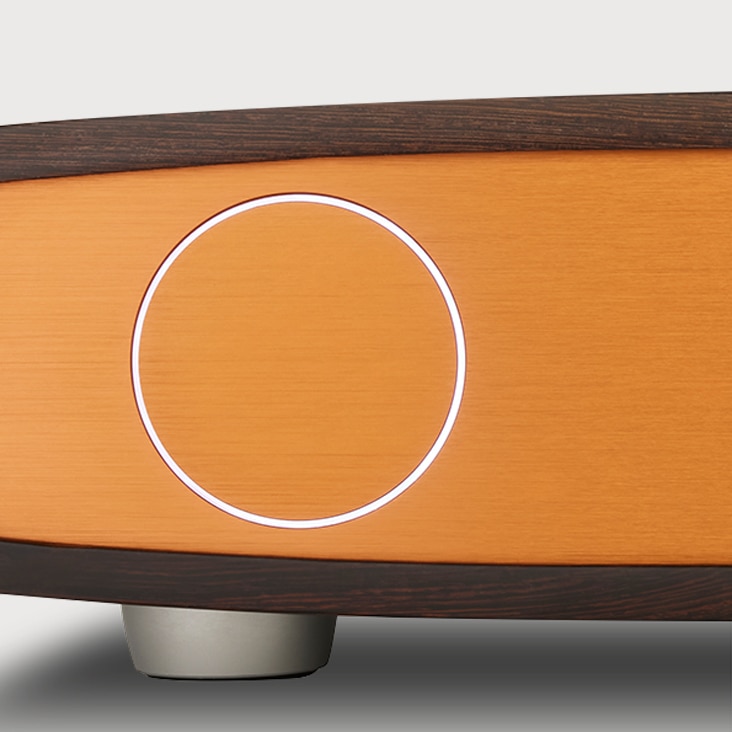
Build and Features
Measuring 44cm x 41.5cm x 13cm (w x d x h) Java amps look like nothing else. The top and bottom cases curve over the sides, sandwiching the main chassis. These are made from CNC-machined solid wood and finished with a lovely real wood veneer. The veneers and colours can be customised to suit your taste, with seven options for the top and bottom casework, from white satin through to dark walnut and three options for the front panel – black, silver and copper. The front panel, made from 8mm anodised aluminium, features two large circular knobs, one for source selection on the left and one for volume on the right. There’s a remote sensor, a 6.35mm headphone output jack and the company logo and that’s about it. The visual effect is clean, uncluttered and classy.
Would you like to support our mission to bring intelligence, insight and great writing to entertainment journalism? Help to pay for the coffee that keeps our brains working and fingers typing just for you. Witchdoctor, entertainment for grownups. Riveting writing on music, tech, hi-fi, music, film, TV and other cool stuff. Your one-off (or monthly) $5 or $10 donation will support Witchdoctor.co.nz. and help us keep producing quality content. It’s really easy to donate, just click the ‘Become a supporter’ button below.
Speaking of “class”, Java amps operate in Class D, using GaN-FET (Gallium Nitride) technology in place of the better-known silicon-based FET transistors. Unlike, for example, the latest Technics Pure Digital amplifiers which use an all-digital signal path, the Single Shot takes an analogue signal, like the more traditional Class A, Class A/B amps. The two GaN-FET modules – one per channel – made by an OEM to Java’s specifications, sit internally one on either side of the chassis, and are attached to the large heatsinks we see protruding on the outside. Referring to the heatsinks, Martin admitted this was perhaps somewhat over-engineered and indeed, I noticed very little heat during my time with the amp – warm at the most, though the look is aesthetically pleasing. These GaN-FET modules form the basis of the switch-mode power amp section, switching at high speed with little or no distortion, while the preamp stage utilises the LDR (light-dependant resistor) preamp design. Power-wise we get a substantial 200 watts per channel into 8 ohms or 400wpc into 4 ohms. I asked Martin why, after trying out various types of amplification methods during the R&D period, he decided to go with GaN-FET, and he answered simply: “Because I heard one.”
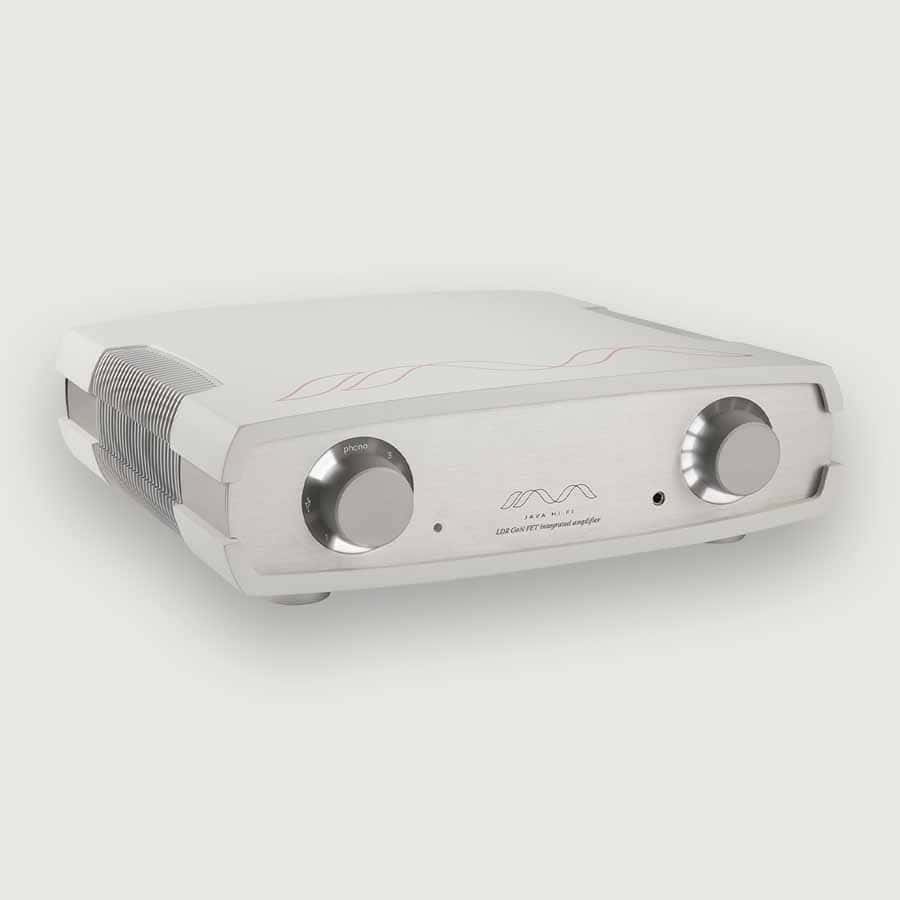
On the back panel, a USB-B input allows access to the onboard DAC (there is also a Bluetooth AptX module) with RCA inputs for the onboard moving magnet phono stage, two extra line inputs and a pair of pre-outs if you wish to use a power amp at some stage. There are two pairs of speaker binding posts which, along with the RCA plugs, are made by ETI Research. They’re very nicely made and add to the amp’s overall feeling of elegance and attention to detail. An IEC power socket and on/off switch are all that’s left to mention. A lovely little remote control is included for volume and source selection.
The DAC section, also made for Java to their specifications, consists of two Burr Brown chips which can deliver up to 24/192 PCM audio files. While the DAC converts DSD to PCM, it doesn’t do native DSD. However, Martin informed me something is in the works for enthusiasts of that format.
The phono stage and headphone section are designed in-house by Java and as we shall soon discover, I think you’re going to have to spend a considerable amount more to get significantly better-sounding separates.
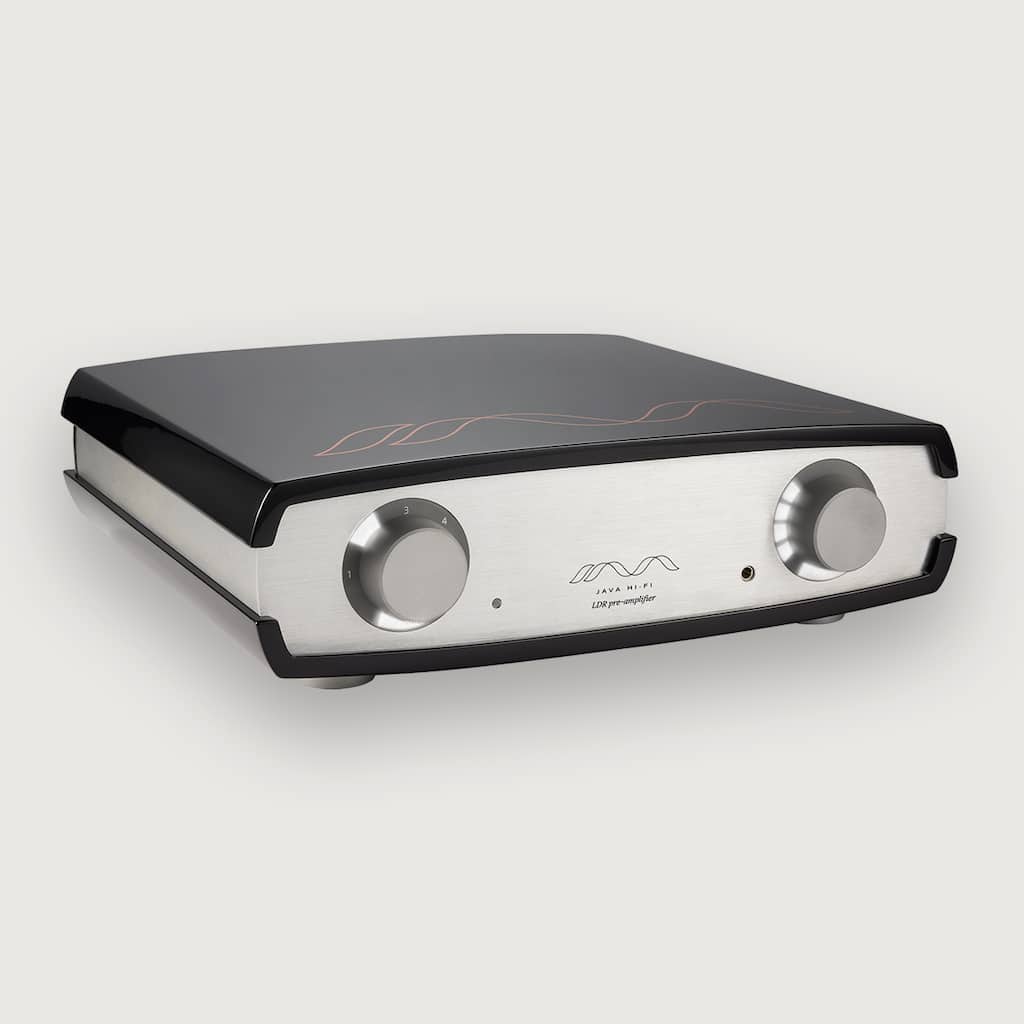
The entire PCB is inverted in a technique intended to control vibration and resonance from within the audio circuit. The source selections and volume control are backlit and while these are quite bright, especially at night when you may like to listen with the lights off, this can be partially solved with the use of the ‘Night Mode’ button on the remote. Due to the circuitry design, only the volume knob lights are dimmed; however, a strategically placed record or CD cover solves the lefthand side source knob brightness. But! This is not the only reason to deploy Night Mode, as I was – admittedly a little slow – to discover. The real benefit of Night Mode is that we get a little low frequency boost so that at low volumes (for example, when the family is asleep, or perhaps you have paper-thin walls separating you from your neighbours) you can still get a sense of full-range dynamics and low-end presence. I sincerely wish more amplifiers included this feature.
Should you desire a bit more of everything, the Double Shot integrated amplifier offers twice the power and a fully balanced configuration. You will of course expect to pay a little more, though the same custom finishes are available.
Listening
My Reference 3A speakers, when new, cost maybe around a fifth of the price of those Wolf von Langas but I was pleased to recognise the signature of the Single Shot in my own system. For me, the Single Shot gave a presentation that was open and natural with good dynamic contrasts and, importantly for my preferences at least, richly textured. I got the sense that the amplifier had perfect control over the speakers, with plenty of power and drive on hand, yet there was simultaneously a sense of calm and ease. Bass went reasonably deep where needed with good tonal definition, the midrange displayed good detail and presence and the upper frequencies, while crisp and clean, didn’t have the sort of glassy sheen that some high-end amplifiers can sometimes have. This isn’t a criticism of those amplifiers as that highly explicit treble can be very addictive, but it doesn’t always necessarily come across as particularly natural.
But the Java is far from laid back – on the contrary, it has a lovely rhythmic drive, and the well-balanced frequency range is full of smooth textural goodness. When I talk about texture, I’m referring to the contrasting nuances one can hear within different instruments, voices and effects. It’s tone and timbre but also the depth and degree to which they are perceived in relation to each other. Kind of difficult to explain, but my wife refers to the phenomena as “brain tickle” which is as good an explanation as any.
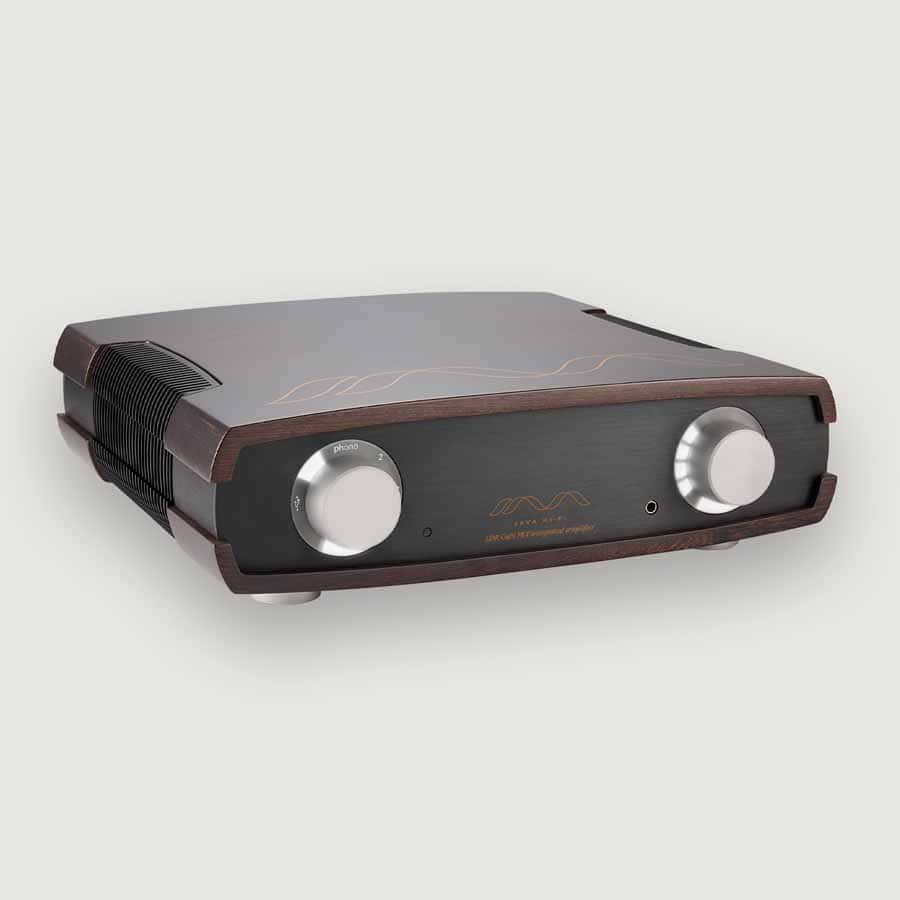
The Single Shot gives a refined, silky sound emanating from a dead silent background from where I easily got a good sense of depth and layering. Detail levels, while not overly clinical are excellent, simmering and pulsating with delicious clarity. Timbre and texture are where I feel the Single Shot really excels. The various tones of drum skins, guitar bodies and strings, brass instruments, and vocals, all sounded natural and vibrant. Textures and note edges really pop out and there’s a sense of absolute presence my Unison amp doesn’t quite manage to convey. Tonally, the Single Shot isn’t necessarily coloured in the same way as, say, a tube or MOSFET circuit and while not as thick or meaty sounding either, it’s certainly far from thin.
When I listened to ‘Parallax Map’ from Kooscha’s Minilogue Dubs EP (2021, Souplex Records), via Tidal/Roon, I was treated to an addictively smooth and articulate electronic soundscape, completely free from clutter or condensation. Bass was deep and powerful with great control and tone – not “fat” or warm, but rather more direct and note-precise. Clear-edged micro dynamics and timbral detail helped create that brain tickle. There’s a tapping hi-hat that comes in from the right after a minute or two and here it popped out crisp and clear; digitally sampled for sure but wonderfully reproduced all the same.
From Prelude To… by Barbara & Ernie (1971, Rhino/Atlantic), I listened to their cover of Jefferson Airplane’s ‘Somebody to Love’. Imaging was sharp and spread out across a wide soundstage but most importantly the instruments sounded precise with clear note edges and accurate tones. Barbara Massey’s voice was powerful and present – a real showstopper – and the Single Shot easily displayed the agility necessary to drive the song rhythmically. The DAC inside the Java amp is clearly impressive, sounding to me very similar to my Electrocompaniet although the latter doesn’t seem quite as lit up or as defined when it comes to note edges or tones.
I had to sell my lovely A23 SUT to fund the purchase of my Wand 14/4 Turntable (fortunately The Wand EQ has an excellent MC stage for my EMT cart) but I really wanted to try the Single Shot’s on board phono stage. Thus, a Hana EH cartridge made its way into my system. The EH is a high output version of the EL moving coil which I also regrettably had to sell. Being a high-output MC means one can use the EH with most moving magnet phono stages and it certainly helps that it is a great sounding, great value cartridge.
I had been on a Radiohead buzz recently and for me, Amnesiac and In Rainbows are the best recorded albums from their catalogue. Album starter ‘Pakt Like Sardines in A Crushd Tin Box’ can sound a bit dark and cluttered in some systems but the Java kept everything orderly, giving holographic imaging with superb separation, while maintaining the song’s slightly claustrophobic and troubling atmosphere. The presentation was clean and slick, a textural treat with chunky bass and wonderful instrument and vocal presence.
Likewise, with Kenny Burrell’s ‘Chitlins Con Carne’ from the jazz album Midnight Blue (1963, Blue Note), imaging was precise, and the dynamics of the various percussive elements were breathtaking. The saxophone had a cheerfully lit up and colourful character, the tonal palette of Burrell’s guitar playing was nicely expressed and the bass guitar notes were solid and rhythmically concise. The Single Shot gave a lively, effervescent presentation that called for repeat plays.
One of my go-to test tracks is Black Sabbath’s ‘War Pigs’ (Paranoid, 1970, Rhino reissue) because through the right system, it can sound fear-inducingly good. I’ve heard setups where the drums sound so propulsive and lifelike, the guitar and vocals so visceral and searing, that I’ve almost had to go off and have a chamomile tea and a wee lie down. Listening with the Java amp, the drums had good speed and tone though they didn’t have the overall room-thumping impact and dynamic power offered by the Unison or Technics amps. Cymbal detail was good, and the bassline was easy to discern whereas in some systems it can get a little overpowered. Both the electric guitar and Ozzy’s vocal had a little more bite than I’m used to – highlighting the fact that the Single Shot is transparent and faithful to a recording. It doesn’t sugarcoat anything, nor does it add any kind of overemphasis. I did think a little more body or, dare I say it, warmth through the midrange might have been nice for this record, just to balance the treble a little bit, but I enjoyed it nonetheless.
When comparing the Single Shot’s onboard phono stage to my Wand EQ using Wilco’s latest LP Cousin (2023, Nonesuch) I found the Single Shot gave a slightly more spacious presentation with a smidgeon better depth of field. It was a bit more filled-out sounding and things like kick drums and basslines tended to sound a little chunkier and more concise. These weren’t big differences, the Wand being an incredible little phono stage, but in absolute terms, I thought the Java just had the edge.
Plugging in my HiFiMan Edition XV2 planars, the Java allowed the headphones to give a spacious sound with deep and punchy low end and excellent timbre and dynamics. My love for this headphone was reaffirmed. It’s an underrated gem (admittedly not in production for, I think, at least 5 years) which I consider comparable to Audeze’s LCDX (probably a controversial take). Much like the phono section, in no way is the headphone stage a mere bonus after-thought add-on, rather it adds further value to the already incredible Single Shot package.
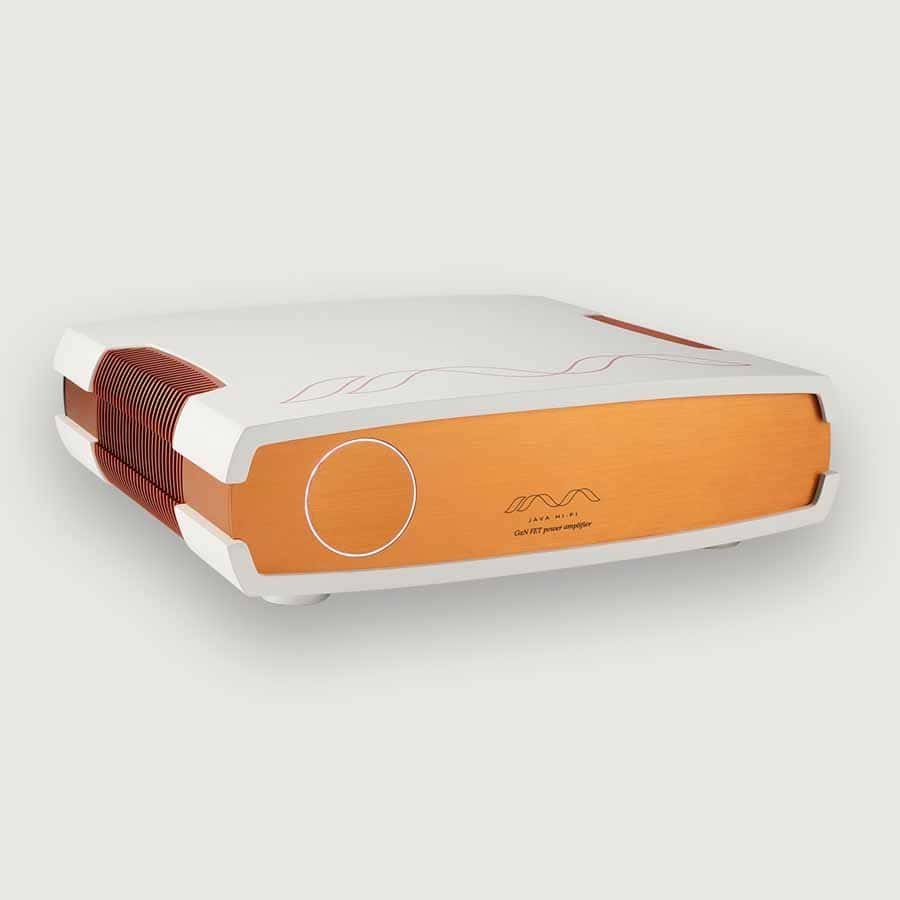
Conclusion
What more can I possibly say? This is an exceedingly fine product from a friendly and enthusiastic little New Zealand company. Everything about it, from the design and build through to the finished product and performance, confirms that Java amplifiers are a work of love – and art. In a nutshell the Single Shot delivers a sound which is open, spacious and full of texture but, superlatives aside, what it ultimately does best is remind you of what a wonderful experience sitting back and listening to music can be. Purchasing one is certainly quite the investment, but it will bring joy for your lifetime and doubtless beyond.
Note: The quoted price of $11,495 is for standard finishes. Wood veneer finishes cost an extra $895.














